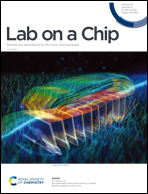Understanding organotropism in cancer metastasis using microphysiological systems
Abstract
Cancer metastasis, the leading cause of cancer-related deaths, remains a complex challenge in medical science. Stephen Paget's “seed and soil theory” introduced the concept of organotropism, suggesting that metastatic success depends on specific organ microenvironments. Understanding organotropism not only offers potential for curbing metastasis but also novel treatment strategies. Microphysiological systems (MPS), especially organ-on-a-chip models, have emerged as transformative tools in this quest. These systems, blending microfluidics, biology, and engineering, grant precise control over cell interactions within organ-specific microenvironments. MPS enable real-time monitoring, morphological analysis, and protein quantification, enhancing our comprehension of cancer dynamics, including tumor migration, vascularization, and pre-metastatic niches. In this review, we explore innovative applications of MPS in investigating cancer metastasis, particularly focusing on organotropism. This interdisciplinary approach converges the field of science, engineering, and medicine, thereby illuminating a path toward groundbreaking discoveries in cancer research.

- This article is part of the themed collections: Lab on a Chip Review Articles 2024 and Lab on a Chip HOT Articles 2023


 Please wait while we load your content...
Please wait while we load your content...